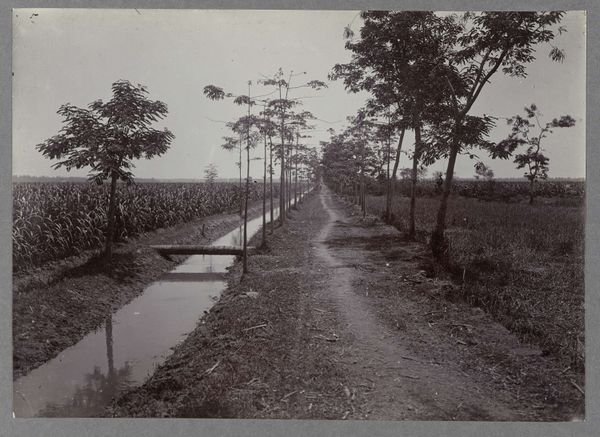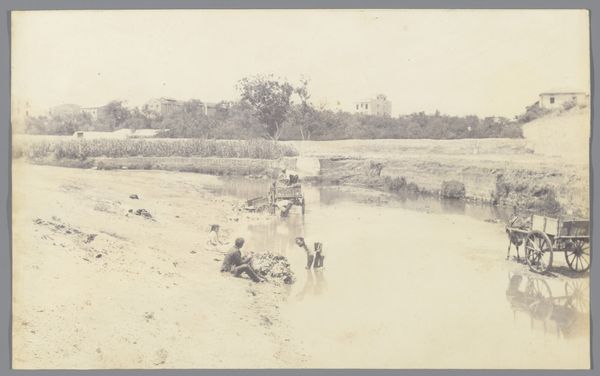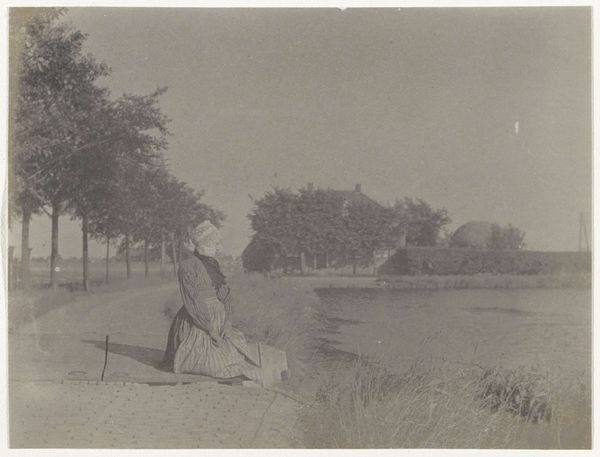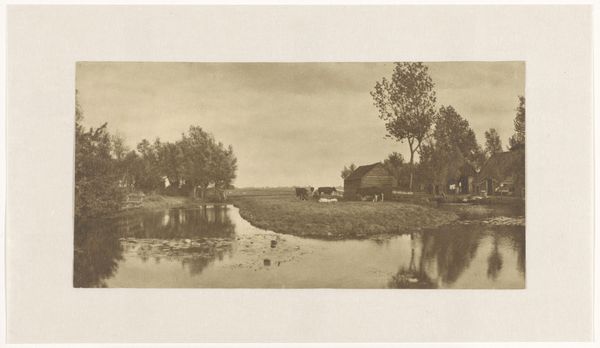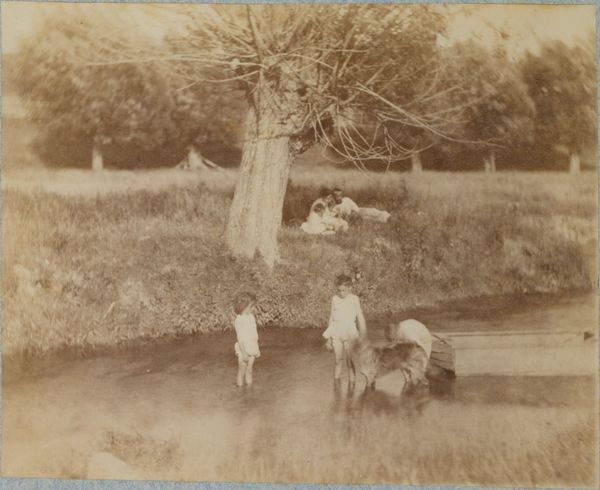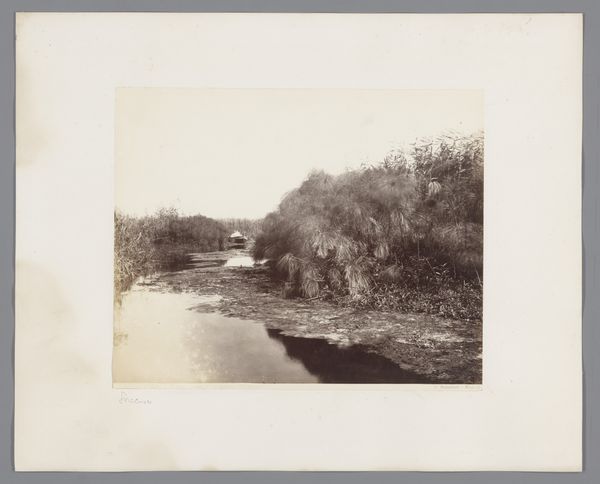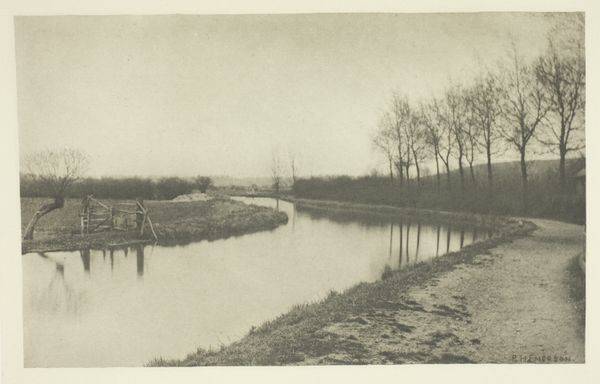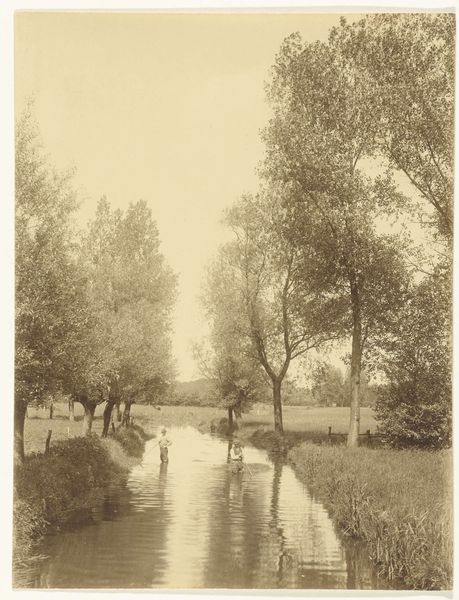
Jagers zitten aan de waterkant bij de duinen in Vogelenzang c. 1900 - 1930
0:00
0:00
photography, gelatin-silver-print
#
pictorialism
#
landscape
#
nature
#
photography
#
gelatin-silver-print
#
modernism
#
realism
Dimensions: height 166 mm, width 226 mm
Copyright: Rijks Museum: Open Domain
Editor: So, here we have Richard Tepe’s “Hunters Sitting on the Waterside by the Dunes in Vogelenzang,” a gelatin silver print from sometime between 1900 and 1930, now at the Rijksmuseum. The photograph feels really… staged, almost theatrical in its composition. What stands out to you? Curator: It's interesting you use the word "theatrical." Let’s consider the position of these hunters within a social and environmental context. How might this seemingly calm scene mask a power dynamic? Who are these hunters, and what does it signify that they are occupying this space within nature? Editor: I guess I hadn't thought about it that way. I was just noticing the composition, but you're right. The act of hunting itself has an impact. Is this about control and dominance then? Curator: It's a photograph made during a time when colonialism and ideas of masculine dominance were deeply ingrained. Photography itself was used to document and even justify the exploitation of both land and people. So how do we view this “landscape” tradition now? Editor: That's a big shift in perspective for me. It changes the way I see landscape photography of that era in general, knowing that these picturesque scenes were often created and consumed within specific power structures. Curator: Exactly. Consider the choices Tepe made— the angle, the light, the subjects he chose to immortalize. These aren’t neutral decisions; they’re laden with cultural meaning. Can art serve as a critical reflection of this power now, or is it only a symptom of a violent system? Editor: I'm not sure I can answer that right now, but you've given me a lot to think about. This photo is not just a peaceful nature scene. Curator: It’s a starting point, a conversation starter. Examining art like this forces us to ask tough questions about who holds power, who is being represented, and who is being left out of the frame, both literally and figuratively.
Comments
No comments
Be the first to comment and join the conversation on the ultimate creative platform.
